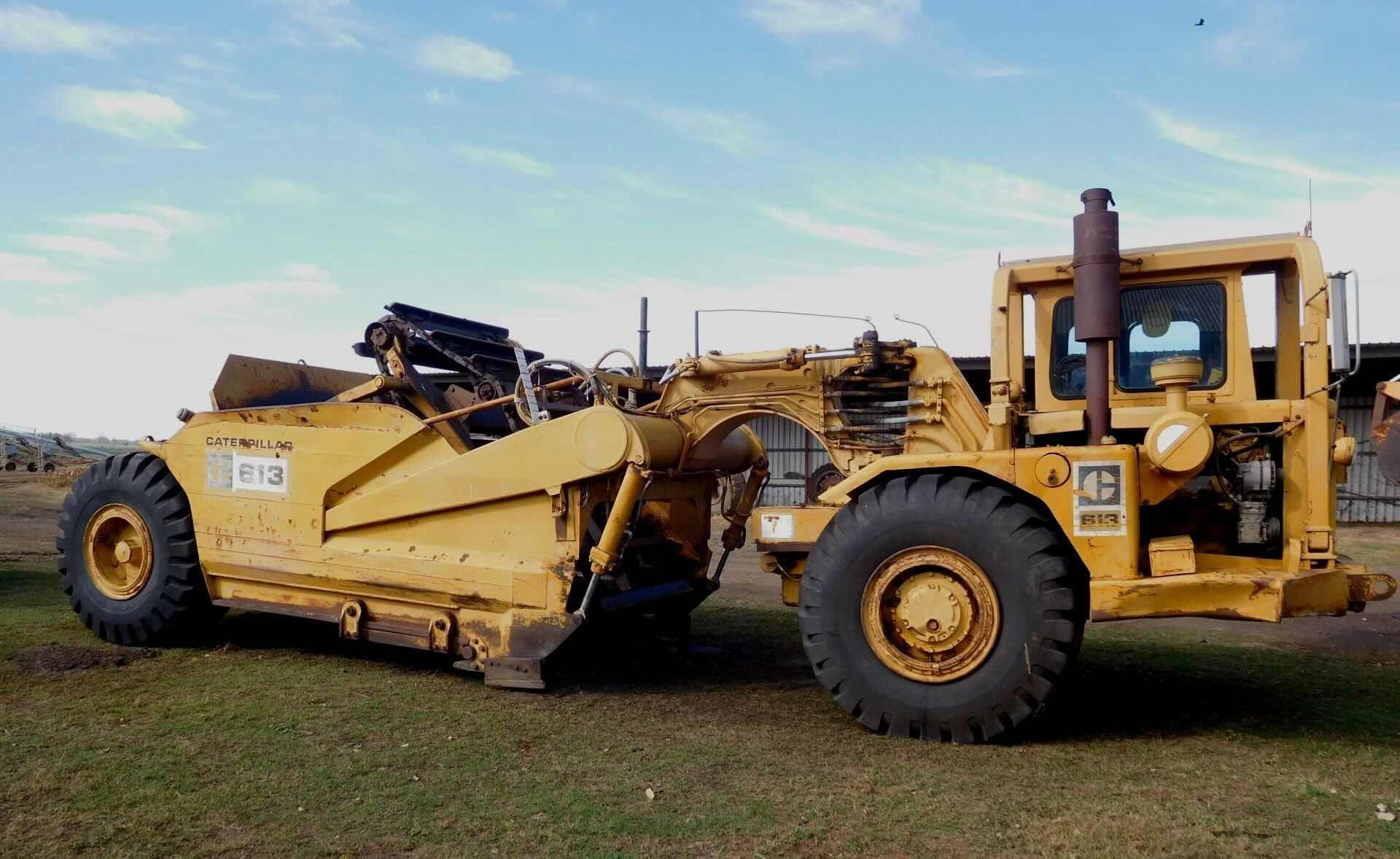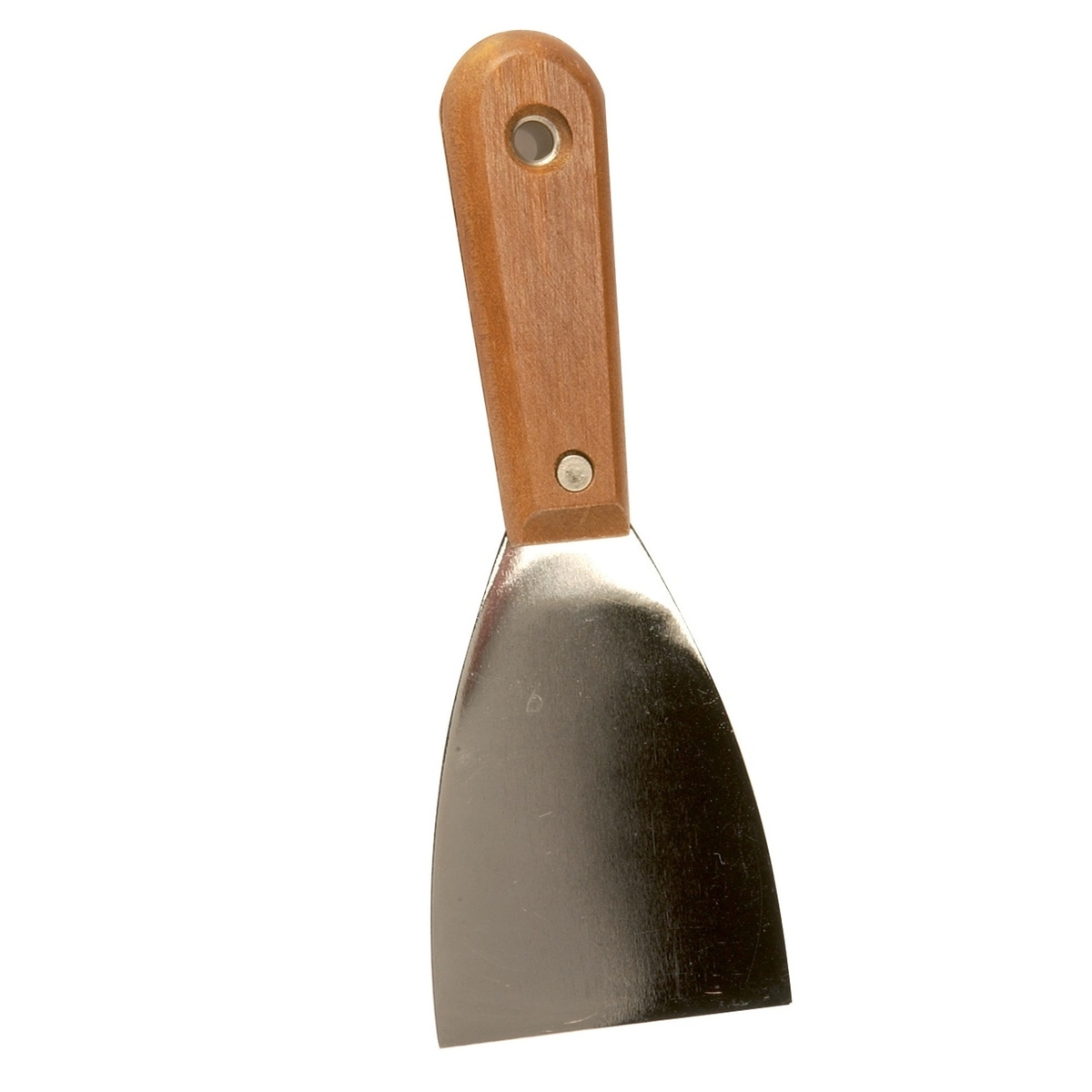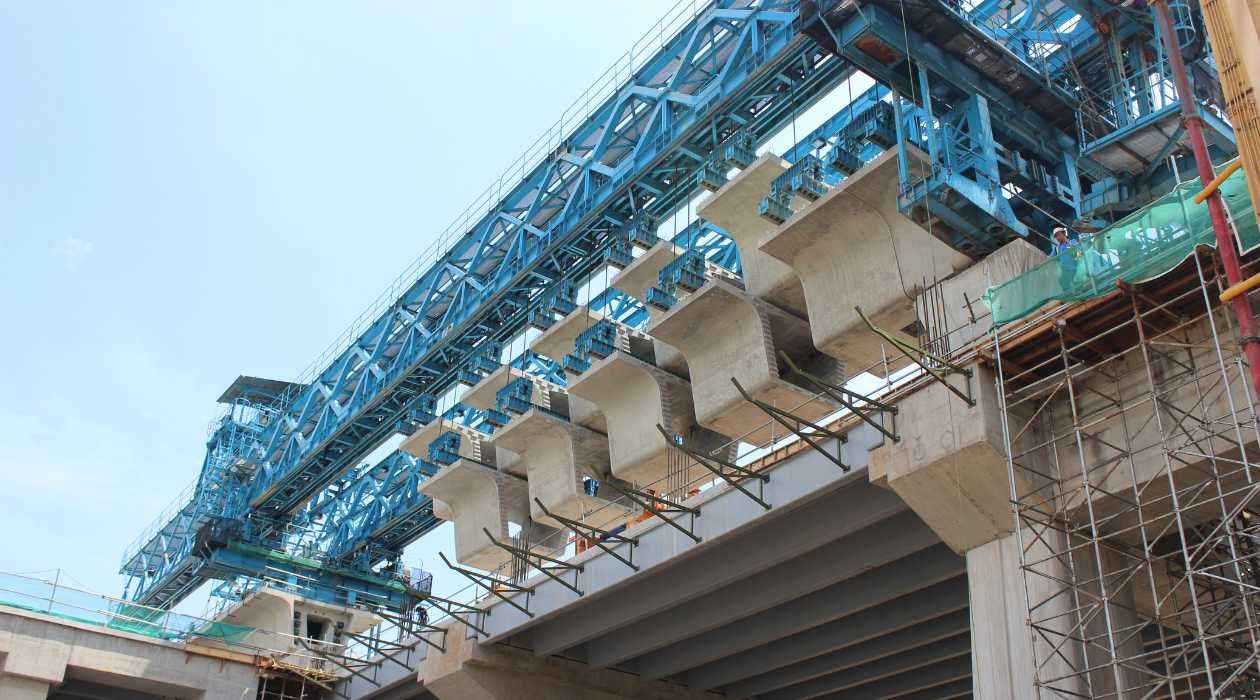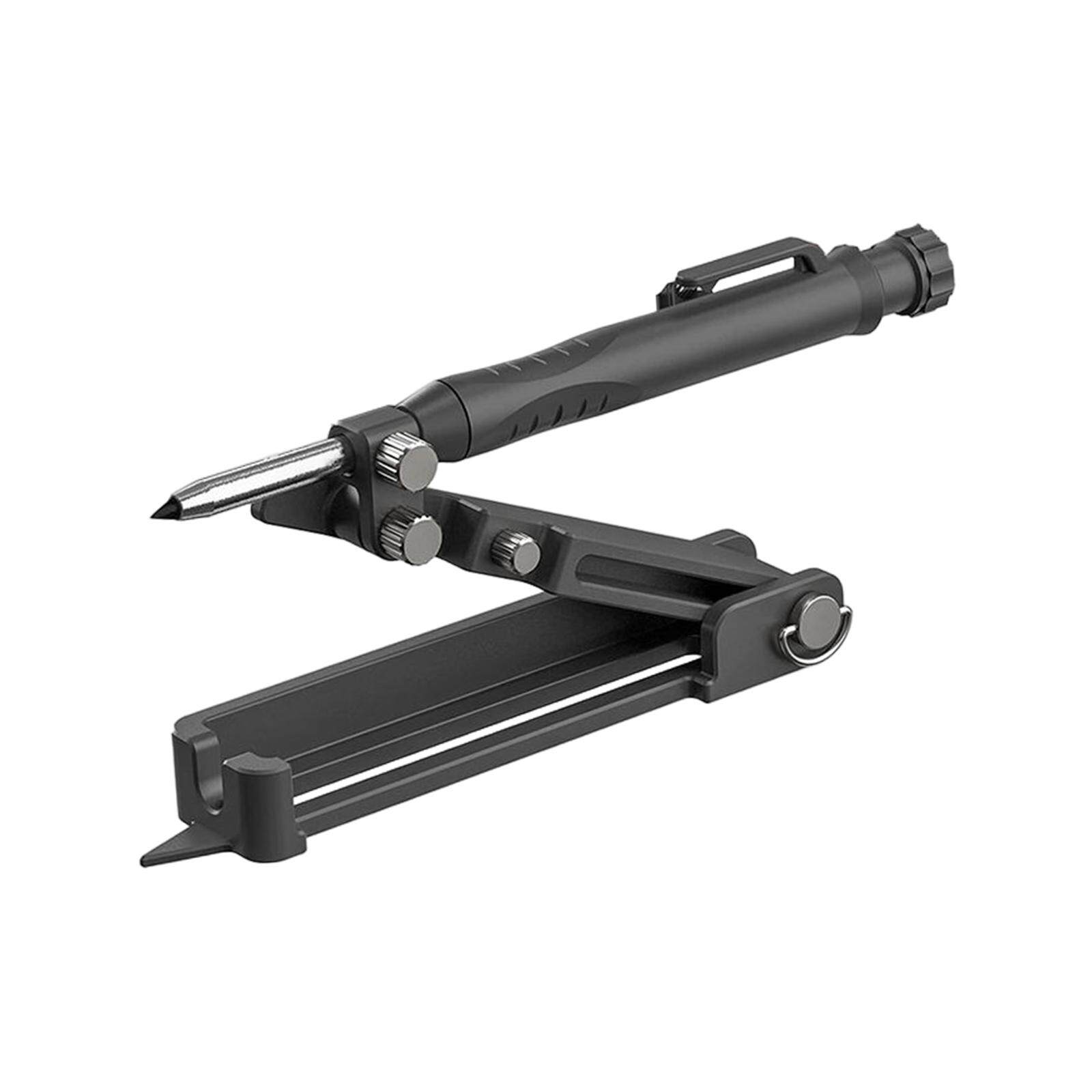Home>diy>Building & Construction>What Is A Scraper In Construction


Building & Construction
What Is A Scraper In Construction
Modified: January 9, 2024
Learn more about the role of scrapers in building construction and how they contribute to efficient earthmoving and material hauling on construction sites.
(Many of the links in this article redirect to a specific reviewed product. Your purchase of these products through affiliate links helps to generate commission for Storables.com, at no extra cost. Learn more)
Introduction
Welcome to the world of construction, where innovation and technology constantly shape the way we build. One essential piece of equipment that plays a significant role in construction projects is the scraper. Whether you are involved in road construction, mining, or earth-moving operations, understanding what a scraper is and how it works is crucial.
A scraper, also known as a bulldozer scraper or earth mover, is a heavy-duty vehicle designed for excavation and moving large quantities of earth, soil, or other materials. Equipped with a large blade or bucket at the front, scrapers are incredibly efficient in handling substantial volumes of material in a short period of time.
Throughout this article, we will explore the various aspects of scrapers in construction, including their definition, working mechanism, types, applications, advantages, and disadvantages. We will also delve into the safety considerations and maintenance practices necessary for operating scrapers.
So, whether you are a construction professional looking to expand your knowledge or a curious individual interested in the inner workings of these powerful machines, let’s dive into the world of scrapers in construction.
Key Takeaways:
- Scrapers are versatile heavy-duty vehicles essential for efficient earthmoving in construction. Their ability to handle large material volumes makes them invaluable for excavation, road construction, mining, and land reclamation projects.
- While scrapers offer high productivity and cost savings, their limitations include limited precision, confined space restrictions, and high initial investment. Proper safety protocols, maintenance, and operator training are crucial for their effective and safe operation.
Read more: How To Store A Tongue Scraper
Definition of a Scraper in Construction
A scraper in construction refers to a heavy-duty vehicle specifically designed for excavation and earth-moving tasks. It is equipped with a large, horizontal blade or bucket at the front, which can be hydraulically raised or lowered to scrape and move large quantities of earth, gravel, or other materials.
The primary function of a scraper is to cut into the ground, fill its bucket with material, and then transport it to another location on the construction site. Whether it’s clearing land, constructing roads, or mining operations, scrapers are indispensable in handling substantial volumes of material quickly and efficiently.
Scrapers work in a unique way. As the vehicle moves forward, the blade or bucket cuts into the earth, scooping up the material. The blade is then raised, causing the material to slide into the hopper or bucket. Once filled, the scraper moves to the desired location to dump the material and then returns to repeat the process.
These machines are powered by a robust engine, usually located at the rear of the vehicle, to provide the necessary power for excavation and movement. Some scrapers also feature additional functionalities, such as a water tank to dampen dusty environments or even an articulated design to improve maneuverability.
In summary, a scraper in construction is a heavy-duty vehicle equipped with a large, horizontal blade or bucket, designed to cut, scrape, and transport large quantities of earth or material on construction sites. Their efficiency in handling substantial volumes of material has made them an essential component in various construction operations.
How Scrapers Work
Scrapers are versatile machines that work by cutting into the ground, collecting material, and transporting it to another location on the construction site. Let’s take a closer look at the step-by-step process of how scrapers work:
1. Cutting into the Ground: The scraper is positioned at the starting point of the excavation area. The blade or bucket is lowered, cutting into the ground and collecting the material.
2. Filling the Hopper or Bucket: As the scraper moves forward, the blade’s angle helps to scoop up the material and guide it into the hopper or bucket. Some scrapers have a self-loading feature that automatically fills the hopper or bucket as the machine moves.
3. Raising the Blade: Once the hopper or bucket is filled with material, the blade is raised hydraulically. This action ensures that the collected material slides into the hopper or bucket, ready for transportation.
4. Transporting the Material: The scraper moves to the desired location on the construction site to deposit or unload the material. The material can be transported a few feet away or even to a distant area, depending on the construction project’s requirements.
5. Unloading the Material: To unload the material, the scraper lowers the blade or bucket and tilts it to release the contents. Some scrapers have a dumping feature that allows for controlled discharge of the material, preventing spills or unwanted spread.
6. Returning for the Next Load: Once the material is unloaded, the scraper returns to the starting point to repeat the process. This cycle continues until the desired excavation or earth-moving task is complete.
Scrapers are known for their efficiency in handling large volumes of material. Their ability to cut into the ground, fill the hopper or bucket, and transport the material in a continuous cycle makes them highly productive in construction operations.
It is worth noting that the operator plays a crucial role in operating the scraper effectively. They maintain control over the machine’s movement, monitor the cutting depth, and ensure proper loading and unloading of material.
By following this efficient process, scrapers contribute significantly to the success of construction projects, allowing for quick and efficient excavation and movement of materials on the job site.
Types of Scrapers
Scrapers come in different types, each designed for specific construction tasks and projects. Let’s explore some of the common types of scrapers used in the industry:
1. Elevating Scraper: The elevating scraper, also known as a self-loading scraper, is one of the most popular and versatile types. It features a hydraulically operated scraper bowl that can be raised to deposit the material into a truck or dumpsite. These scrapers are efficient for medium to large-scale earth-moving projects.
2. Pan Scraper: Pan scrapers, also called carry-all scrapers, consist of a bowl with a vertical front wall and a horizontal bottom. The pan scraper is commonly used for spreading and leveling materials over large areas. It can be adjusted to control the amount of material carried and dumped.
3. Open Bowl Scraper: Open bowl scrapers are similar to elevating scrapers, but they lack the elevating feature. These scrapers are suitable for short hauls and are often used for rough grading and spreading materials.
4. Semi-U Scraper: Semi-U scrapers are designed with a U-shaped bowl and are mainly used for soil excavation and medium-range hauling. They provide high cutting and carrying capacity, making them ideal for projects that require more substantial material movement.
5. Square Scraper: Square scrapers have a box-shaped bowl and offer higher capacity for material hauling. They are commonly used in large-scale earth-moving projects, such as highway construction, where significant quantities of material need to be moved quickly.
6. Towed Scraper: Towed scrapers are not self-propelled but are instead towed by a tractor or another vehicle. They are typically employed for smaller-scale projects where the cost of a self-loading scraper may not be justified.
7. Push-Pull Scraper System: The push-pull scraper system consists of multiple scrapers connected together. One scraper pushes the material while another pulls it, allowing for longer haul distances and increased productivity.
These are just a few examples of the various types of scrapers available in the construction industry. Each type offers its own advantages and is suited for specific tasks and project requirements. The selection of the most appropriate scraper type depends on factors such as the scale of the project, material to be moved, and desired efficiency.
Applications of Scrapers in Construction
Scrapers are versatile machines that find application in a wide range of construction projects. Their ability to efficiently move large quantities of material makes them invaluable in various scenarios. Let’s explore some of the key applications of scrapers in the construction industry:
1. Excavation and Earthmoving: One of the primary applications of scrapers is excavation and earthmoving. They are used to clear land, dig foundations, and remove unwanted materials like soil, rocks, and debris. Scrapers can quickly and efficiently excavate large areas, making them essential in the initial stages of construction projects.
2. Road Construction: Scrapers play a vital role in road construction projects. They are used to level and grade the road surface, remove excess soil or materials, and create a smooth base before applying asphalt or concrete. Scrapers enable the efficient and uniform distribution of materials, ensuring high-quality roads.
3. Mining Operations: In mining operations, scrapers are widely employed for material handling. They are used to extract and transport minerals, rocks, and overburden from mining sites. Scrapers can efficiently navigate through various terrains, making them ideal for mining projects in challenging environments.
4. Canal and Dam Construction: Scrapers are utilized in the construction of canals and dams. They help in excavating and shaping the canal or dam, moving large volumes of soil and other materials. Scrapers play a crucial role in creating and maintaining the desired slope, elevation, and contour of these water management structures.
5. Land Reclamation: Scrapers are frequently used in land reclamation projects, where they help reshape and level the land surface. They are utilized to remove excess soil and materials, create even surfaces, and prepare the land for further development, such as building infrastructure or agricultural use.
6. Large-scale Earthmoving Projects: For massive earthmoving projects, such as creating landfills, sports fields, or airport runways, scrapers are the go-to machines. With their high capacity and efficiency, scrapers can quickly move and distribute substantial volumes of material to shape the desired landscape.
These are just a few examples of the diverse applications of scrapers in construction. Their ability to handle large volumes of material efficiently and quickly makes them indispensable in a wide range of projects. From excavation and road construction to mining and land reclamation, scrapers play a crucial role in shaping the built environment.
When using a scraper in construction, make sure to regularly inspect and maintain the cutting edge to ensure optimal performance and efficiency. This will help to prevent unnecessary wear and tear and extend the lifespan of the equipment.
Read more: What Is Construction
Advantages of Using Scrapers
Scrapers offer numerous advantages in construction projects, thanks to their efficiency and versatility. Let’s explore some of the key advantages of using scrapers:
1. High Productivity: Scrapers are highly efficient machines that can move large volumes of material in a short amount of time. Their ability to cut, scrape, and transport material in a continuous cycle results in increased productivity on construction sites.
2. Time and Cost Savings: With their high productivity, scrapers help save both time and money on construction projects. They can complete earthmoving tasks quickly, reducing project timelines and labor costs. Additionally, their capacity to handle large amounts of material at once minimizes the need for multiple trips and equipment, further reducing costs.
3. Large Material Handling Capacity: Scrapers are designed to handle substantial volumes of material efficiently. This makes them particularly useful in projects that require moving large quantities of earth, gravel, or other materials, such as road construction or mining operations.
4. Versatility: Scrapers offer versatility in terms of their applications. They can be used for excavation, earthmoving, grading, and leveling tasks, making them adaptable to a wide range of construction projects. This versatility translates to increased efficiency and cost-effectiveness.
5. Maneuverability: Scrapers are designed to navigate through different terrains with ease. Their ability to operate on uneven surfaces and handle various soil conditions makes them suitable for construction sites with challenging terrain.
6. Reduced Environmental Impact: Scrapers help in minimizing the environmental impact of construction projects. By efficiently moving and distributing material, scrapers reduce the need for excessive excavation and minimize soil disturbance, preserving the natural ecosystem as much as possible.
7. Improved Site Safety: Using scrapers can contribute to improved site safety. With their efficient material handling capabilities, scrapers reduce the manual labor required, minimizing the risk of injuries associated with manual material handling. Additionally, their advanced features, such as visibility enhancements and safety systems, enhance operator and worker safety on the site.
These advantages highlight why scrapers are widely used in the construction industry. Their ability to enhance productivity, save time and costs, handle large material volumes, and adapt to different tasks make them a valuable asset on construction sites.
Disadvantages of Using Scrapers
While scrapers offer numerous advantages in construction projects, it is important to be aware of their potential disadvantages as well. Let’s explore some of the key disadvantages of using scrapers:
1. Limited Precision: Scrapers are primarily designed for bulk earthmoving tasks and may not provide the precision required for certain construction activities. Fine grading or intricate shaping of surfaces may require additional equipment or methods to achieve the desired precision.
2. Restrictions in Confined Spaces: Scrapers require ample space to operate efficiently. In confined or tight spaces on construction sites, such as narrow roads or densely built areas, the maneuverability of scrapers may be limited, hindering their effectiveness.
3. Dependence on Suitable Soil Conditions: The performance of scrapers can be impacted by the condition of the soil. They work best in loose, uncompacted soils, and may experience difficulties in densely compacted or rocky soils. In such situations, alternative equipment or methods may be required.
4. High Initial Investment: Acquiring scrapers can involve a significant initial investment. The cost of purchasing and maintaining these heavy-duty machines can be substantial, especially for smaller construction companies or projects with limited budgets.
5. Operating Costs: In addition to the initial investment, operating costs for scrapers can be relatively high. These costs include fuel, maintenance, repairs, and the need for skilled operators. Proper budgeting and maintenance planning are essential to manage these ongoing expenses effectively.
6. Limited Functionality: While scrapers are versatile in many respects, they may not be suitable for every construction task. For specialized activities or operations requiring specific equipment functionalities, supplementary equipment may be necessary.
7. Environmental Considerations: Scrapers can have environmental impacts, particularly in sensitive ecosystems or areas with protected flora and fauna. The disturbance caused by excavation and earthmoving activities can disrupt natural habitats and ecosystems if not properly managed and mitigated.
It is important to consider these disadvantages when determining the suitability of scrapers for specific construction projects. Understanding their limitations allows project managers and construction professionals to make informed decisions and explore alternative methods or equipment when necessary.
Safety Considerations when Operating Scrapers
Operating scrapers in a construction environment requires strict adherence to safety protocols to ensure the well-being of operators, workers, and the surrounding area. Here are some essential safety considerations when operating scrapers:
1. Training and Certification: Operators should receive comprehensive training on operating scrapers and obtain the necessary certifications. Proper training ensures that operators are familiar with the equipment’s controls, safety features, and operational best practices.
2. Pre-Operational Inspections: Before using a scraper, it is crucial to conduct thorough pre-operational inspections. This includes checking the engine, hydraulics, brakes, tires, and other critical components to ensure they are in proper working condition. Any issues or concerns should be addressed before operating the machine.
3. Personal Protective Equipment (PPE): All operators and workers in the vicinity should wear appropriate personal protective equipment. This may include high-visibility clothing, hard hats, safety glasses, steel-toed boots, and hearing protection to minimize the risk of injuries from hazards on the construction site.
4. Safety Devices and Features: Scrapers should be equipped with essential safety devices and features, such as rollover protection structures (ROPS) and seat belts. Operators should ensure that these safety features are in good working order and used at all times during operation.
5. Clear Communication: Clear communication protocols should be established among operators, workers, and other personnel on the site. This allows for effective communication of intentions, warnings, and potential hazards, reducing the risk of accidents and promoting a safer work environment.
6. Safe Operating Practices: Operators should follow safe operating practices at all times. This includes operating the scraper at safe speeds, maintaining a safe distance from other workers or equipment, and adhering to the specified load limits and operational guidelines outlined by the manufacturer.
7. Visibility and Blind Spots: Operators should ensure they have clear visibility of their surroundings. Regularly checking blind spots, using mirrors effectively, and employing additional spotters or warning systems can help mitigate the risks associated with limited visibility.
8. Site Awareness and Hazard Identification: Operators should be vigilant and aware of the construction site’s hazards. This includes identifying potential obstructions, uneven terrain, buried utilities, or other hazards that may impede safe operation. Reporting any hazards or concerns to the appropriate personnel is essential.
9. Maintenance and Inspections: Regular maintenance and inspections of the scraper are crucial for safe operation. This includes routine inspections of electrical systems, hydraulic components, brakes, and other critical parts. Any maintenance issues should be addressed promptly to prevent accidents caused by equipment failure.
10. Emergency Preparedness: Operators should be familiar with emergency procedures, such as proper shut-down protocols, evacuation plans, and reporting accidents or near-miss incidents. This ensures a prompt response in the event of an emergency and minimizes the potential consequences.
Prioritizing safety when operating scrapers is essential to maintain a safe working environment and prevent accidents. By following these safety considerations and continuously promoting a culture of safety, operators and construction professionals can significantly reduce the risk of injuries and ensure the successful and safe completion of construction projects.
Proper Maintenance and Care of Scrapers
Maintaining scrapers in optimal condition is crucial for their efficient and safe operation on construction sites. Here are some key practices for the proper maintenance and care of scrapers:
1. Follow Manufacturer’s Guidelines: Familiarize yourself with the manufacturer’s guidelines and recommendations for maintenance and care. These guidelines provide specific instructions for routine inspections, lubrication, and maintenance tasks based on the scraper’s make and model.
2. Regular Inspections: Conduct routine inspections of the scraper to identify any signs of wear, damage, or malfunction. Inspect hydraulic systems, tires, brakes, lights, electrical components, and other critical parts. Address any issues promptly to prevent further damage or breakdowns.
3. Keep Clean and Clear: Clean the scraper regularly to remove dirt, debris, and excess material. This helps prevent buildup and corrosion, ensuring proper functioning of the equipment. Pay special attention to air filters, radiators, and cooling systems to maintain optimal performance.
4. Check Fluid Levels: Regularly check and maintain appropriate fluid levels, including engine oil, hydraulic fluids, coolant, and fuel. Insufficient or contaminated fluids can lead to decreased performance and potential damage to the scraper’s components.
5. Lubrication: Follow the manufacturer’s recommendations for lubrication intervals and use the appropriate lubricants for each component. Proper lubrication reduces friction, extends the lifespan of moving parts, and ensures smooth operation.
6. Tire Maintenance: Inspect tires for wear, cuts, bulges, and proper inflation. Replace worn or damaged tires promptly to maintain traction and stability. Properly inflated tires ensure efficient operation and minimize strain on the scraper’s components.
7. Battery Care: Regularly inspect and maintain the battery to ensure proper functioning. Clean battery terminals, check connections, and test the battery voltage periodically. Replace worn-out or weak batteries to avoid unexpected breakdowns.
8. Keep Records: Maintain detailed records of maintenance activities, including inspections, repairs, and servicing. This allows for proper documentation, tracking repairs and replacement parts, and ensures a proactive approach to maintenance and equipment management.
9. Operator Training: Train operators on proper equipment operation and the importance of regular maintenance and care. Encourage operators to report any issues or concerns promptly to address them before they escalate.
10. Schedule Professional Servicing: Periodically schedule professional servicing and inspections by qualified technicians. They can perform more in-depth checks and address any underlying issues that may require specialized knowledge or tools.
By following these maintenance practices, construction professionals can ensure that scrapers remain in good working condition, prolonging their lifespan and maximizing their performance. Regular maintenance and proper care not only enhance the scraper’s efficiency but also contribute to a safer working environment on construction sites.
Read also: 14 Best Cooktop Scraper For 2025
Conclusion
Scrapers are powerful machines that play a crucial role in construction projects, offering efficient and effective earthmoving capabilities. Understanding what scrapers are, how they work, and their various applications is essential for construction professionals and those curious about the industry.
Throughout this article, we have explored the definition of scrapers and their working mechanism. We have discussed the different types of scrapers available, such as elevating scrapers, pan scrapers, and open bowl scrapers, each with its own specific uses and advantages.
Additionally, we have highlighted the diverse applications of scrapers in construction, including excavation and earthmoving, road construction, mining operations, canal and dam construction, and land reclamation. Their versatility and high productivity make them indispensable in numerous construction projects.
While scrapers offer significant advantages in terms of productivity, cost savings, and material handling capacity, they do have some limitations. Factors such as limited precision, restrictions in confined spaces, and high initial investment should be considered when deciding on their suitability for specific projects.
Furthermore, we have emphasized the importance of safety when operating scrapers. Proper training, personal protective equipment, pre-operational inspections, and adherence to safety protocols are crucial for the well-being of operators, workers, and the surrounding environment.
Last but not least, we have discussed the significance of proper maintenance and care of scrapers. Routine inspections, regular cleaning, checking fluid levels, proper lubrication, and tire maintenance are essential practices to ensure the optimal performance and longevity of scrapers.
In conclusion, scrapers are indispensable machines in the construction industry. Their ability to efficiently move and handle large volumes of material makes them invaluable in various construction projects. By understanding how scrapers work, their applications, and the necessary safety and maintenance considerations, construction professionals can harness the full potential of these machines while ensuring a safe working environment and project success.
Frequently Asked Questions about What Is A Scraper In Construction
Was this page helpful?
At Storables.com, we guarantee accurate and reliable information. Our content, validated by Expert Board Contributors, is crafted following stringent Editorial Policies. We're committed to providing you with well-researched, expert-backed insights for all your informational needs.














0 thoughts on “What Is A Scraper In Construction”